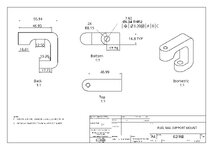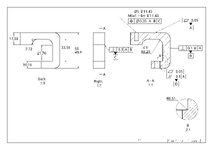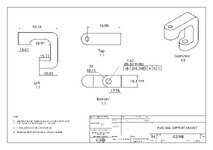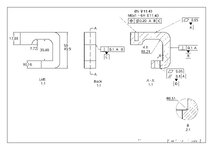JRCP
Automotive
- Sep 21, 2022
- 3
Hi Everyone,
I’m still learning GD&T and could use your expertise. While I can design various simple parts in CAD, applying GD&T is where I struggle the most.
Could you take a look and let me know if this design is suitable for machining? What modifications or additions are needed to ensure accurate fitment? I’ve used millimeters, but I can provide the dimensions in inches if needed.
Thanks in advance for your help!
JRCP
I’m still learning GD&T and could use your expertise. While I can design various simple parts in CAD, applying GD&T is where I struggle the most.
Could you take a look and let me know if this design is suitable for machining? What modifications or additions are needed to ensure accurate fitment? I’ve used millimeters, but I can provide the dimensions in inches if needed.
Thanks in advance for your help!
JRCP




